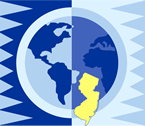Health Disparities
Click a bar to expand or collapse its content.
A health disparity is "a particular type of health difference that is closely linked with social, economic, and/or environmental disadvantage. Health disparities adversely affect groups of people who have systematically experienced greater obstacles to health based on their racial or ethnic group; religion; socioeconomic status; gender; age; mental health; cognitive, sensory, or physical disability; sexual orientation or gender identity; geographic location; or other characteristics historically linked to discrimination or exclusion."1
| Reducing health disparity among New Jerseyans is an overarching goal of the New Jersey Department of Health (NJDOH). |
A health disparity is "a particular type of health difference that is closely linked with social, economic, and/or environmental disadvantage. Health disparities adversely affect groups of people who have systematically experienced greater obstacles to health based on their racial or ethnic group; religion; socioeconomic status; gender; age; mental health; cognitive, sensory, or physical disability; sexual orientation or gender identity; geographic location; or other characteristics historically linked to discrimination or exclusion."1
Healthy New Jersey 2020 (HNJ2020) is the state's version of the federal Healthy People 2020 initiative, which sets national objectives for improving the health of all Americans.
HNJ2020 is used for State Health Assessment (SHA) and is also the State Health Improvement Plan (SHIP). The most recent SHA was published in 2018 but HNJ2020 objectives are continually tracked on an online dashboard. The 2020 SHIP focused on six priority areas:
One of Healthy People's four overarching goals is to "achieve health equity, eliminate disparities, and improve the health of all groups." In order to measure progress toward that goal, every HNJ2020 objective based on person-level data has data and targets for the four largest racial/ethnic groups in the state -- Whites, Blacks, Hispanics, and Asians. When a single year of data does not provide enough events to calculate reliable rates for all racial/ethnic groups, three-year averages are used, if available. For some objectives, three years of data combined still do not include enough events to calculate statistically reliable rates and are indicated as such in HNJ2020 documents. For some data sources outside of NJDOH, data are not available for all HNJ2020 racial/ethnic subgroups.
All HNJ2020 objectives are being tracked as indicators within the NJSHAD system.
Development of Healthy New Jersey 2030 (HNJ2030) has been underway since 2017 and equity is a critical component of HNJ2030's framework and cuts across all topic areas of the project.
HNJ2020 is used for State Health Assessment (SHA) and is also the State Health Improvement Plan (SHIP). The most recent SHA was published in 2018 but HNJ2020 objectives are continually tracked on an online dashboard. The 2020 SHIP focused on six priority areas:

- Health equity
- Birth outcomes
- Mental health and substance use
- Nutrition, physical activity, and chronic disease prevention
- Immunization
- Aligning state and community health improvement planning
One of Healthy People's four overarching goals is to "achieve health equity, eliminate disparities, and improve the health of all groups." In order to measure progress toward that goal, every HNJ2020 objective based on person-level data has data and targets for the four largest racial/ethnic groups in the state -- Whites, Blacks, Hispanics, and Asians. When a single year of data does not provide enough events to calculate reliable rates for all racial/ethnic groups, three-year averages are used, if available. For some objectives, three years of data combined still do not include enough events to calculate statistically reliable rates and are indicated as such in HNJ2020 documents. For some data sources outside of NJDOH, data are not available for all HNJ2020 racial/ethnic subgroups.
All HNJ2020 objectives are being tracked as indicators within the NJSHAD system.
Development of Healthy New Jersey 2030 (HNJ2030) has been underway since 2017 and equity is a critical component of HNJ2030's framework and cuts across all topic areas of the project.
New Jersey P.L.2004, c.137 established the Eliminating Health Disparities Initiative
in the Office of Minority and Multicultural Health (OMMH)
and set forth priority areas for OMMH to develop and implement a comprehensive, coordinated plan to reduce
health disparities between White and racial and ethnic minority populations in the State.
The health disparity priority areas are:
The health disparity priority areas are:
- asthma
- breast, cervical, prostate, and colorectal cancer screening
- cardiovascular disease
- diabetes
- hepatitis C
- HIV/AIDS
- immunizations (adult and child)
- infant mortality
- injuries (accidental) and violence
- kidney disease
- obesity
- sexually transmitted diseases
New Jersey is a racially, culturally, and ethnically diverse state. More than one-fifth of New Jersey residents are foreign-born and nearly one-third speak a language other than English at home2 and of those, only 60% feel they speak English very well.3
This rich diversity presents a challenge to health professionals. Diverse populations bring different attitudes, expectations, beliefs, and communication styles to each health encounter. Health professionals must be sensitive to these complex issues if they are to be successful.4
 The Office of Minority and Multicultural Health offers health professionals many cultural competency resources, including the National Standards for Culturally and Linguistically Appropriate Services (CLAS) in Health and Health Care, known as "CLAS Standards." There are 15 CLAS Standards, however the first one serves as the frame and essential goal of the other fourteen: "Provide effective, equitable, understandable, respectful, and quality care and services that are responsive to diverse cultural health beliefs and practices, preferred language, health literacy, and other communication needs."5
The Office of Minority and Multicultural Health offers health professionals many cultural competency resources, including the National Standards for Culturally and Linguistically Appropriate Services (CLAS) in Health and Health Care, known as "CLAS Standards." There are 15 CLAS Standards, however the first one serves as the frame and essential goal of the other fourteen: "Provide effective, equitable, understandable, respectful, and quality care and services that are responsive to diverse cultural health beliefs and practices, preferred language, health literacy, and other communication needs."5
The New Jersey Statewide Network for Cultural Competence is a broad-based network to advance culturally competent practices in New Jersey.
This rich diversity presents a challenge to health professionals. Diverse populations bring different attitudes, expectations, beliefs, and communication styles to each health encounter. Health professionals must be sensitive to these complex issues if they are to be successful.4
 The Office of Minority and Multicultural Health offers health professionals many cultural competency resources, including the National Standards for Culturally and Linguistically Appropriate Services (CLAS) in Health and Health Care, known as "CLAS Standards." There are 15 CLAS Standards, however the first one serves as the frame and essential goal of the other fourteen: "Provide effective, equitable, understandable, respectful, and quality care and services that are responsive to diverse cultural health beliefs and practices, preferred language, health literacy, and other communication needs."5
The Office of Minority and Multicultural Health offers health professionals many cultural competency resources, including the National Standards for Culturally and Linguistically Appropriate Services (CLAS) in Health and Health Care, known as "CLAS Standards." There are 15 CLAS Standards, however the first one serves as the frame and essential goal of the other fourteen: "Provide effective, equitable, understandable, respectful, and quality care and services that are responsive to diverse cultural health beliefs and practices, preferred language, health literacy, and other communication needs."5
The New Jersey Statewide Network for Cultural Competence is a broad-based network to advance culturally competent practices in New Jersey.
NJSHAD Community Dashboard
Dashboards of health indicators for Asians, Blacks, Hispanics, and Whites compared to statewide and national rates for:- Birth and Infant Health
- Healthy New Jersey
- Leading Causes of Death
NJSHAD Indicator Reports
Most NJSHAD indicator reports have one or more views by race/ethnicity except for those related to the environment, air, and water quality because those are mostly about places and systems, not individual people.NJSHAD Custom Data Queries
All datasets in the NJSHAD query system have race and/or ethnicity among the variable choices except Communicable Disease Cases and School Immunization Status.Other Data Sources
More data related to race and ethnicity for these topics are available at their respective websites.- The Office of Minority and Multicultural Health is leading the effort to reduce and eventually eliminate the gaps in health status between New Jersey's minority and multicultural communities and in the state as a whole.
- The Division of Family Health Services administers programs addressing maternal, infant, and child health; WIC; and Special Child Health and Early Intervention Services (SCHEIS). SCHEIS has information about sickle cell disease which disproportionately affects some minority groups.
- The Office of Community Health and Wellness includes the Office of Nutrition, Fitness, and Tobacco Control as well as Chronic Disease Programs for conditions such as asthma, diabetes, and stroke, which disproportionately affect some minority groups.
- The Division of HIV, STD, and TB Services uses its resources to help community-based networks deliver high-quality, comprehensive services that meet the language and cultural needs of the people they serve.
- Occupational Health and Workplace Safety provides information on OSHA, Right to Know, workplace injuries, hazardous exposures, and more, as well as several documents in Spanish.
1. US Department of Health and Human Services. The Secretary's Advisory Committee on National Health Promotion and Disease Prevention Objectives for 2020. Phase I report: Recommendations for the framework and format of Healthy People 2020. Section IV: Advisory Committee findings and recommendations. Page 28. 10/28/08
2. US Census Bureau, Quick Facts, retrieved from New Jersey Quick Facts on 4/11/22.
3. US Census Bureau, American Community Survey 5-Year Estimates for 2016-2020, retrieved from Table S1601 on 4/11/22.
4. NJDOH Office of Minority and Multicultural Health, Cultural Competency Resources webpage. 4/12/18.
5. NJDOH Office of Minority and Multicultural Health, Cultural Competence CLAS Policy and Practice circular. 1/1/17.
2. US Census Bureau, Quick Facts, retrieved from New Jersey Quick Facts on 4/11/22.
3. US Census Bureau, American Community Survey 5-Year Estimates for 2016-2020, retrieved from Table S1601 on 4/11/22.
4. NJDOH Office of Minority and Multicultural Health, Cultural Competency Resources webpage. 4/12/18.
5. NJDOH Office of Minority and Multicultural Health, Cultural Competence CLAS Policy and Practice circular. 1/1/17.

